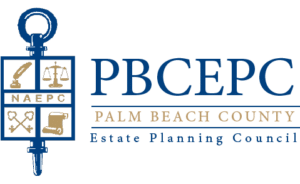
By Clifford S. Gelber
Gerson Preston Klein Lips Eisenbert & Gelber PA
The focus of estate planning has developed into a highly complex, multi-dimensional process. Many estates are now below a taxable threshold, yet significant enough to merit legacy stewardship. Accordingly, the planner must be cognizant of many factors when a plan is devised. The planner should consider a “team approach” and include the estate planner, accountant and financial advisor.
Initially, the planner needs to identify the assets in a potential estate. This involves a comprehensive look at the assets held by the individual. The most basic of outcomes is to ensure that all assets are properly titled. Property held in the individual’s name could be subject to probate proceedings which will unnecessarily increase filing fees and tie up assets until certain statutory time periods have expired such as notice to creditors, etc. Ultimately, all assets that are improperly titled should be transferred in accordance with the estate plan.
Another reason to review the assets is to identify the type of assets. Becoming familiar with their fair market value and basis, as well as having the ability to track these items after the planning has been completed should be an ongoing process. Once this analysis is done, these assets should be reviewed periodically to ensure that the assets are placed in the correct structured entity. This process facilitates the income tax planning that has become an integral part of current estate planning. The current maximum estate tax rate is 40%. The maximum federal income tax rate is 37% and the maximum long-term capital gains rate is 20% or 23.8% (including the net investment income tax rate). Devising a plan that provides for moving assets to best utilize basis has the potential of saving income taxes. I have participated recently in numerous pre-death asset “swapping” exercises where low basis assets (assets that have the potential to have large tax gains when sold) are moved into the estate to get the basis adjustment (an adjustment of its basis to the fair market value of the asset at date of death). This process was extremely effective: as a result, the family inherited assets that can be sold off without incurring any income tax.
For those of us that are not big proponents of giving assets outright to beneficiaries, we instead believe in leaving the assets in trust for the beneficiaries. Advantages of leaving assets in trust range from preservation of assets, protection from creditors and avoidance of inheritance being included in marital assets, to name a few. For the most part, these trusts will span multi-generations. Accordingly, once the assets have been identified, the planner will want to understand the individual and their family dynamics. In order to keep property in trust, the grantor must be able to figure out how much access his or her heirs will have to the trust income and/or principal. This will vary among individuals as well as by size of trust and nature of assets held in trust, etc. Accordingly, the planner must acquaint themselves with the family dynamics of governance as well as help guide what the next generation of governance may look like.
The estate planner has a unique opportunity to explore all sorts of different dynamics with their client. Consideration is given to who successor trustees will be. If a spouse is a successor trustee, do the children ever become trustees? What if the children are married? What if they are married with children and you created trusts that extend to your grandchildren and great grandchildren? Who will be successor trustee if your child can no longer serve as trustee? What if your grandchildren are the current beneficiaries? If your child cannot be trustee, will you allow your child’s spouse to become trustee? Will the spouse have complete control over the trust, or do you introduce a distribution trustee (trust protector) so there is oversight on disbursements from the trust, etc.? Further, any named person written into the documents should be monitored as relationships change over time. As you can see, this is extremely subjective and there is no right or wrong. However, when working with clients with multi-generational planning, the planner must discuss who they see having the maturity and responsibility to take on these roles. With enough guidance in the trust documents, the grantor’s intent should be as clear as possible. With the appropriate provisions in the documents, mishaps and unintended consequences can be avoided. It is the planner’s role to have these discussions and to provide guidance, and the client must be willing and ready to tackle these issues.
The planner must consider these matters when devising a plan. The planner must engage their client to get a sense of how the family functions or what the client’s perception is of how their family functions. A properly crafted plan will achieve both estate tax mitigation, as well as family wealth legacy. The documents provide the map to the destination and should capture the intent of the client’s thoughts about their legacy.
I really enjoy my role as planner. I find tremendous value in helping shape the financial legacy of my clients and bridging generations in the process. It is important to realize that an estate plan is only as complete as the last time the client met with their planner.
Clifford S. Gelber CPA is a partner in the accounting firm Gerson Preston Klein Lips Eisenberg & Gelber PA. He specializes in services to high net worth individuals with complex income tax and estate and gift tax matters with offices in Boca Raton and Miami, Florida. He can be reached at (561) 287-4929.
